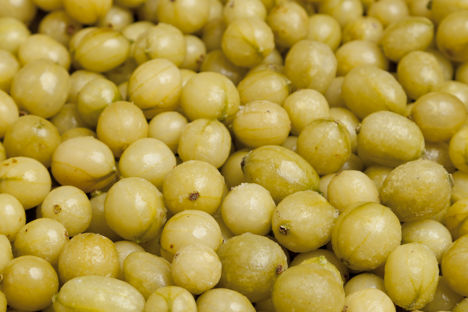Gooseberries are a quintessentially English fruit which have been popular since Victorian times. Having taken a hit in recent years due to the rise in popularity of other fruits such as blueberries and raspberries, gooseberries are now having a bit of a revival and are once again cropping up in supermarkets thanks to increasing interest in baking and preserve-making at home. Gooseberries are naturally high in pectin which makes for an easy jam – all you need is equal quantities of fruit and sugar.
Metric
Imperial
- 1kg gooseberries
- 1kg sugar
Variations
This is the most basic form of gooseberry jam; it can be enhanced with various different flavours depending on your taste. Elderflower and gooseberry go particularly well together and are in season at the same time – add fresh elderflowers when boiling the gooseberries or, if you can't find fresh, you could stir in a little elderflower cordial before bottling. Spices such as cinnamon and ginger also go well with gooseberry jam.
Serving suggestions
Gooseberry jam is wonderful simply spread on toast but can also be used in desserts such as a trifle, piped into doughnuts or even spooned into summer cocktails.
Get in touch
Please sign in or register to send a comment to Great British Chefs.


